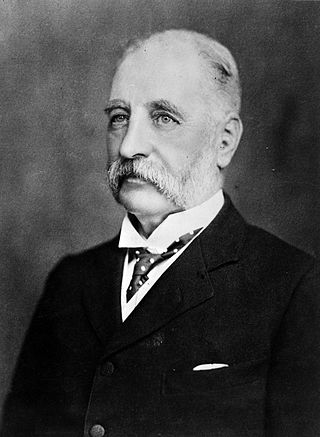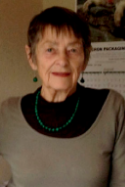
Sir James Hector was a Scottish-New Zealand geologist, naturalist, and surgeon who accompanied the Palliser Expedition as a surgeon and geologist. He went on to have a lengthy career as a government employed man of science in New Zealand, and during this period he dominated the colony's scientific institutions in a way that no single person has since.

George Vernon Hudson FRSNZ was a British-born New Zealand entomologist credited with proposing the modern daylight saving time. He was awarded the Hector Memorial Medal in 1923.

Anna Jacoba Westra, known as Ans Westra, was a Dutch-born New Zealand photographer, well known for her depictions of Māori life in the 20th century. Her prominence as an artist was amplified by her controversial 1964 children's book Washday at the Pa.

The Museum of New Zealand Te Papa Tongarewa is New Zealand's national museum and is located in Wellington. Usually known as Te Papa, it opened in 1998 after the merging of the National Museum of New Zealand and the National Art Gallery. An average of more than 1.1 million people visit every year, making it the 58th-most-visited art gallery in the world in 2023. Te Papa operates under a bicultural philosophy, and emphasises the living stories behind its cultural treasures.

Rita Angus, known as Rita Cook early in her career, was a New Zealand painter who, alongside Colin McCahon and Toss Woollaston, is regarded as one of the leading figures in twentieth-century New Zealand art. She worked primarily in oil and watercolour, and became known for her portraits and landscapes.
Raymond Robert Forster was a New Zealand arachnologist and museum director. He was a Fellow of the Entomological Society of New Zealand.

Shigeyuki "Yuki" Kihara is an interdisciplinary artist of Japanese and Samoan descent. In 2008, her work was the subject of a solo exhibition at the Metropolitan Museum of Art in New York; it was the first time a New Zealander and the first time a Pacific Islander had a solo show at the institution. Titled Shigeyuki Kihara: Living Photographs, the exhibition opened from 7 October 2008 to 1 February 2009. Kihara's self-portrait photographs in the exhibitions included nudes in poses that portrayed colonial images of Polynesian people as sexual objects. Her exhibition was followed by an acquisition of Kihara's work for the museum's collection.

Audrey Lily Eagle was a New Zealand botanical illustrator, whose work mainly focused on New Zealand's distinctive trees and shrubs. As the author and illustrator of the two volume Eagle's Complete Trees and Shrubs of New Zealand, Eagle made a notable contribution to New Zealand botany.

Arctesthes catapyrrha is a species of moth in the family Geometridae. It is endemic to New Zealand.

Beverley Anne Holloway was a New Zealand entomologist. Holloway was a preeminent lucanid systematist and was awarded the New Zealand Commemoration Medal in 1990 for services to New Zealand as a scientist. She was also elected a Fellow of the Entomological Society of New Zealand.

Wilma M. Blom is a marine scientist. Since 2011 she has been Curator, Marine Invertebrates at Auckland War Memorial Museum.

Ayesha Jennifer Verrall is a New Zealand politician, infectious-diseases physician, and researcher with expertise in tuberculosis and international health. She is a Labour Party Member of the New Zealand Parliament and a former Cabinet Minister with the roles of Minister of Health and Minister for Research, Science and Innovation. She has worked as a senior lecturer at the University of Otago, Wellington and as a member of the Capital and Coast District Health Board. During the COVID-19 pandemic she provided the Ministry of Health with an independent review and recommendations for its contact-tracing approach to COVID-19 cases.

Rānui Ngārimu is a New Zealand Māori weaver and textile artist. She has chaired Te Roopu Raranga Whatu o Aotearoa, the national Māori weavers' collective, and is formally acknowledged as a master weaver by appointment to the collective's Kāhui Whiritoi group in 2008.

Lisa Jadwiga Valentina Warrington is a New Zealand theatre studies academic, director, actor and author. She has directed more than 130 productions, and established the Theatre Aotearoa database. In 2014 she was awarded a Lifetime Achievement Award in the Dunedin Theatre Awards, and was three times winner of a New Zealand Listener Best Director award, including one for Tom Scott's The Daylight Atheist.

Dichromodes simulans is a moth of the family Geometridae. This species was first described by George Hudson in 1908. It is endemic to New Zealand and is regarded as rarely encountered. It has been observed in Otago including at the type locality of the Old Man Range / Kopuwai to the south of Alexandra, and at the Caleb Chapman Road Scientific Reserve.

Dianne Sika-Paotonu is a New Zealand immunologist, biomedical scientist and academic in the Department of Pathology and Molecular Medicine and Associate Dean (Pacific) at the University of Otago Wellington. She is of Tongan descent and is the first Pasifika biomedical scientist to receive the Cranwell Medal for science communication in 2020 and the 2022 Prime Minister's Science Communicator of the Year prize. In 2024 Sika-Paotonu was awarded the Callaghan Medal by the Royal Society Te Apārangi.
Barbara Ingeborg Patricia Barratt is a New Zealand entomologist and biocontrol expert. In 2022, she was elected as fellow of the Royal Society Te Apārangi.
Aola Mary Richards was a New Zealand entomologist specialising in the study of New Zealand and Australian cave crickets, or wētā (Rhaphidophoridae), and Australian ladybird beetles (Coccinellidae). She was the first New Zealand woman to gain a PhD in biology.
















